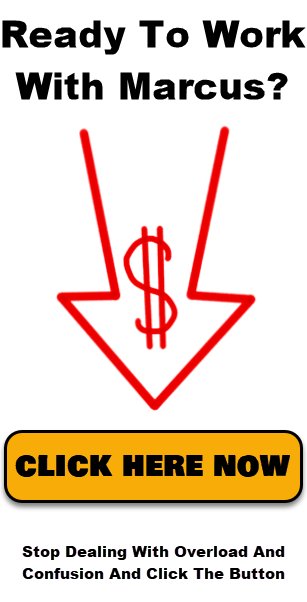Get Paid To Fix Ai Slop – New Side Hustle
From AI Garbage to Profit: NEW Business Model? – This Is HUGE!
AI tools are flooding the internet with content—images, videos, articles, and even music. The problem is that much of it is, frankly, garbage. Random outputs, low-quality images, or content with no real use. But instead of dismissing it, smart entrepreneurs are asking: How do you turn all that noise into profit?
“Most people are generating stuff that has no real direction. But if you know how to package it, there’s a business opportunity sitting right there.”
This guide walks you through a new way of thinking: how to take AI outputs that look useless at first glance and transform them into digital assets that sell.
The Problem With AI Content
AI makes it easy for anyone to generate content, but that also means the market is flooded with poor-quality results. Scroll through social media, and you’ll find:
- Images that look distorted or unrealistic.
- Articles stuffed with keywords but no real value.
- Videos that don’t tell a story.
“There’s no shortage of AI junk out there. The challenge is filtering the junk from the gems.”
Why Most AI Content Fails
- No strategy. People create without knowing their audience.
- Lack of polish. Outputs are left raw instead of being refined.
- No purpose. The content doesn’t solve a problem or provide value.
But here’s the flip side: even “bad” AI content has potential when you repackage, organize, and add human creativity.
The New Business Model – Repurposing AI Outputs
The core idea is simple: take what others ignore and transform it into something useful.
Think of it like recycling. Just because an AI-generated image looks rough doesn’t mean it’s worthless. With a bit of editing, curation, or restructuring, it can become a product someone pays for.
“The secret isn’t in generating more—it’s in turning what’s already been made into something people want.”
Ways to Repackage AI Content Into Profit
- Curated bundles. Instead of one random image, sell sets like “50 Fantasy Backgrounds” or “100 Business Icons.”
- Templates. Use AI text or images as the base for editable Canva or PowerPoint templates.
- Training data. Repurpose AI outputs into datasets for other creators or developers.
- Inspiration packs. Offer collections of AI sketches, prompts, or concept art as brainstorming tools.
Example: Turning Garbage Into Value
- Raw AI output: 50 random character sketches.
- Repackaged product: “Character Concept Art Pack for Game Developers” sold on marketplaces like Etsy or Gumroad.
Practical Workflow – Turning AI Garbage Into Marketable Products
It’s one thing to understand the idea of “repackaging,” but the real win comes when you have a repeatable process. That way, you can consistently take messy, random AI outputs and transform them into products people will actually pay for.
“The gold isn’t in the raw output—it’s in what you do with it after. That’s where the money is made.”
Here’s a step-by-step workflow you can follow:
Step 1: Collect AI Outputs
- Use tools like MidJourney, DALL·E, Stable Diffusion, or ChatGPT.
- Don’t worry if the results look random or imperfect at first—that’s the “garbage” stage.
- Save everything. Even odd results can be valuable later.
Step 2: Sort and Categorize
- Group content into themes: fantasy, business, nature, fitness, etc.
- Discard anything unusable (too distorted, unreadable, or broken).
- Create folders so you can build bundles quickly.
Step 3: Refine the Content
- For images: Edit in Photoshop, Canva, or remove backgrounds.
- For text: Rewrite with clarity, fix grammar, and add real value.
- For videos: Cut, trim, and add subtitles or transitions.
Step 4: Package Into Products
- Bundle images into packs (e.g., “20 Realistic Business Backgrounds”).
- Turn text into templates, guides, or scripts.
- Combine multiple outputs into one premium digital product.
Step 5: Sell on the Right Platforms
- Etsy – Great for design packs and templates.
- Gumroad/Payhip – For digital downloads and niche bundles.
- Creative Market – For higher-end design assets.
- Your website – Build your own brand store over time.
| Stage | Example Action | Outcome |
| Raw AI output | 100 random watercolor images | Messy, inconsistent results |
| Sorting & editing | Pick 25 best, enhance colors in Photoshop | Clean, cohesive set |
| Packaging | Bundle as “25 Watercolor Backgrounds Pack for Designers” | Clear, usable product |
| Selling | List on Etsy and Gumroad with mockups and descriptions | Revenue stream |
Tips for Scaling and Long-Term Opportunities
Once you’ve learned how to turn AI content into something marketable, the next step is scaling. That means building systems, diversifying income streams, and thinking about long-term growth.
“It’s not about one-off sales. The real opportunity is creating a system that works while you sleep.”
Tips for Scaling
- Batch production. Don’t just make one pack—make ten. Use a single session of AI generation to build a full product line.
- Automate sales. Upload to platforms that handle payments and delivery automatically.
- Build bundles. Package multiple products together at a discount for higher-value sales.
- Create upsells. Sell a basic free pack, then offer a premium version with more assets.
- Outsource editing. Once you start earning, hire freelancers to help polish and package faster.
Long-Term Opportunities
- Subscription models. Offer customers monthly access to new AI-generated packs.
- B2B services. Provide businesses with tailored AI assets (presentations, ad creatives, training visuals).
- Licensing deals. License your AI bundles to other creators or platforms.
- Community building. Launch a membership where people pay for access to exclusive AI outputs and resources.
Pro Tips to Stay Ahead
- Keep testing markets. What sells well in design niches may differ from gaming or blogging markets.
- Focus on presentation. A polished mockup can make a simple product look premium.
- Leverage trends. Jump on emerging topics (AI art styles, seasonal events, niche hobbies).
- Educate your buyers. Show them how to use your assets—tutorials increase trust and sales.
Tips From Marcus
Throughout the talk, the speaker dropped practical advice on how to approach AI outputs and transform them into real opportunities. Here are some of the most useful tips highlighted in his words:
1. Don’t Chase Perfection in Raw Outputs
“Most of what comes out will look like junk. That’s fine—you’re not selling the raw output, you’re selling what you do with it.”
- Save even the imperfect results.
- Think of them as rough drafts rather than finished work.
- The polish comes later when you edit, bundle, or repackage.
2. Focus on Bundling for Value
“One random image doesn’t sell. But when you package fifty together, suddenly you’ve got a product.”
- Don’t market single images unless they’re extraordinary.
- Organize outputs into themed sets—background packs, icon sets, concept sketches.
- Bigger bundles give customers more perceived value.
3. Build Systems, Not One-Offs
“The secret is in creating a repeatable system. That way you’re not guessing each time—you know exactly how to turn garbage into gold.”
- Have a workflow: generate → sort → refine → package → sell.
- Create templates for prompts you can reuse.
- Standardize your editing steps so products feel consistent.
4. Sell Where the Buyers Already Are
“Don’t overcomplicate it. Start with places like Etsy or Gumroad. That’s where people are already buying digital products.”
- Use existing marketplaces before building your own store.
- Test what sells—design packs, templates, mockups, etc.
- Once you know what works, scale up with a branded website.
5. Serve a Niche, Not Everyone
“All I need to do is reach a small subset and do it really, really well.”
- Don’t try to appeal to the entire market of AI users.
- Pick a niche (like fitness coaches, game developers, or bloggers).
- Create products that solve problems specifically for that audience.
6. Think About Presentation
“It’s not just the content—it’s how you show it. A polished mockup sells a product better than the raw file ever will.”
- Always showcase products in context (e.g., put images on a mockup of a laptop, poster, or t-shirt).
- Presentation adds professionalism and trust.
- Customers buy with their eyes first.
7. Keep Testing and Adapting
“This space is moving fast. If you’re not testing, you’ll fall behind.”
- Regularly experiment with new styles, prompts, and niches.
- Watch what sells well and double down on it.
- Don’t be afraid to scrap what doesn’t work—move on quickly.
Key Takeaways
- AI generates raw material, not finished products. The value comes from curation and refinement.
- The market is flooded with AI junk—but that creates opportunity. By organizing and packaging, you stand out.
- Think bundles, templates, and packs. Selling curated collections works better than single outputs.
- Workflow matters. Collect → Sort → Refine → Package → Sell.
- Start on platforms like Etsy, Gumroad, or Creative Market. Over time, build your own store.
- Scaling is the game. Batch-produce, automate sales, and think about subscription models.
- Stay ahead. Follow trends, test niches, and keep refining your approach.
Final Words
AI alone won’t make you money—but using it strategically will. The opportunity isn’t in spamming the internet with random outputs. It’s in filtering, polishing, and turning that “garbage” into gold that businesses and consumers actually want.
“All I need to do is reach a small subset and do it really, really well.”
That’s the mindset shift: you don’t need the whole world—you just need to serve the right audience with the right packaged product.

